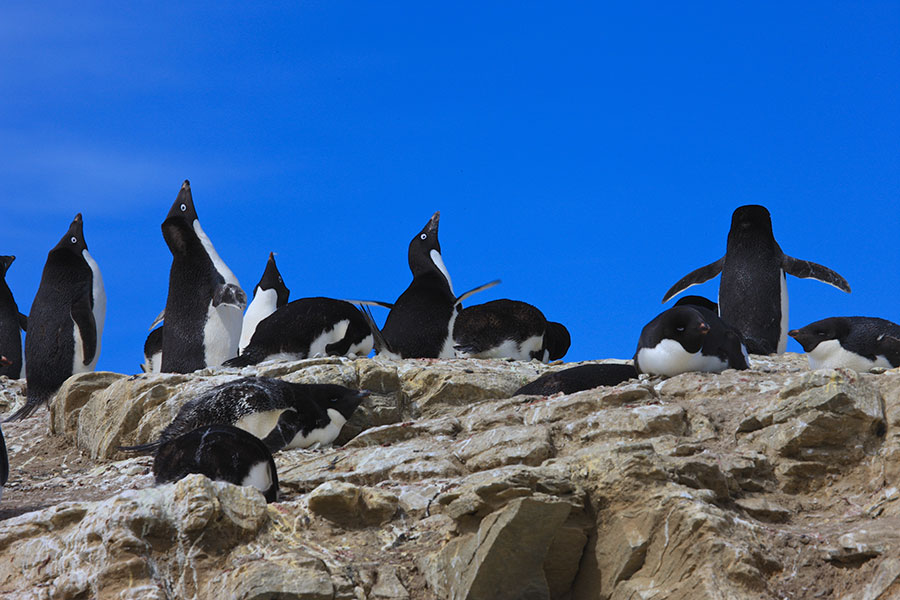
A penguin's life
Cute little penguins in the Antarctic face ugly big problems.
By Kris FosterPenguin populations in the region have been in decline for some time, but there has never been a clear reason, said Bill Patterson, geology professor and director of the Saskatchewan Isotope Laboratory.
In search for answers, Patterson boarded the ship National Geographic Explorer and headed to the South Pole to examine the nesting sites of three brushy-tailed penguins— Adélie, Chinstrap and Gentoo. What he discovered were significant population declines in two species and slight growth in the third over the past 100 years.
"We examined (isotope values of) eggshells and bits of prey items from guano around rookeries and there were no substantial changes for 44,000 years," said Patterson. "It was a boring data set. So then we examined samples from 2003, and it was completely di erent. Isotopic changes coincided with population drops."
The change, Patterson continued, was linked to diet, specifically the consumption of krill, a crustacean closely related to shrimp. Krill populations have changed drastically over the past 250 years for many reasons, including changes in whaling and sealing, fisheries and climate change.
"When krill populations went up due to whaling and sealing—removing those krill feeders—penguins switched to eating krill," Patterson said, adding that krill were abundant and slow, meaning penguins could feed more quickly and be in less danger from predators like leopard seals and killer whales. "Penguins are very aware that their lives are in danger every time they jump into the water."
They are so aware of predators in the water, he said, that it is not uncommon to see a group of penguins standing by the water's edge, waiting until one brave penguin jumps in to test for safety. "They will wait and watch until either that one penguin resurfaces or not. If it comes up, they all jump in."
So penguins got hooked on krill because of availability, but then krill populations started to decline. "Whaling began in the 1760s and krill populations grew but when whaling and sealing stopped, those populations recovered substantially."
As whale and seal populations bounced back, krill populations went into decline, a situation that was even more pronounced because fisheries began catching 150,000 to 200,000 tons of krill per year for food, feed and oil.
Not only was there now a shortage of krill for penguins to feed on, but what was left of the krill population was moving south because of climate change. "The warmer temperatures resulted in krill population moving (to a more suitable climate)," said Patterson.
The penguin diet over the past 100 years to present day is quite different from the krill-only diet during periods of stable populations, Patterson continued. "By examining feathers, nails, guano, stomach contents and eggshells, we know that their diet is now mostly squid, emerald rock cod, silver fish, ice fish and other fish that are further below the surface."
All these seemingly unconnected events have resulted in penguins competing for scarce food and adapting to new food sources. "We taught them to eat krill and then took that away." This diet change has been problematic for Adélie and Chinstrap penguins that are selective eaters; those populations have decreased between 30 and 50 per cent and 20 and 30 per cent respectively. The story for Gentoo penguins is startlingly different.
"Because Adélie populations are collapsing, Gentoos are expanding into those nesting sites," he said. "Gentoo are like teenagers and will eat anything compared to Adélie and Chinstraps which are very selective eaters."
Unfortunately, this is not the end of the story, said Patterson, especially when looking at projected temperature increases.
"There are lots of important animals in this ecosystem and we don't know how further climate change will influence the ecosystem. It's changing faster now than it has over the past 30 million years."

